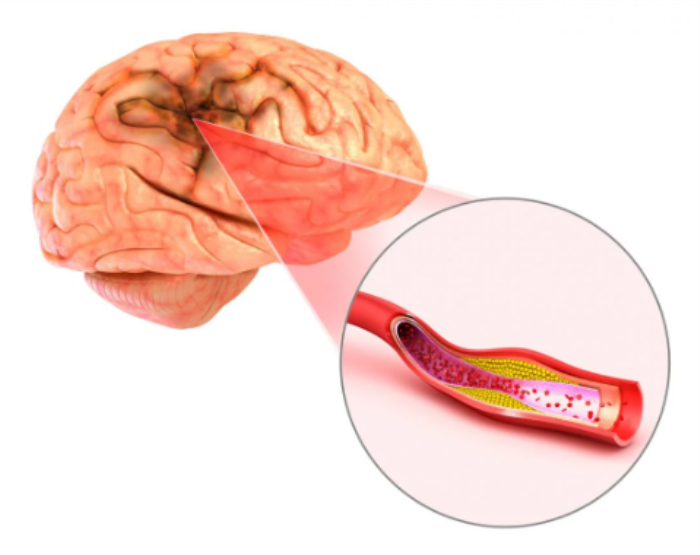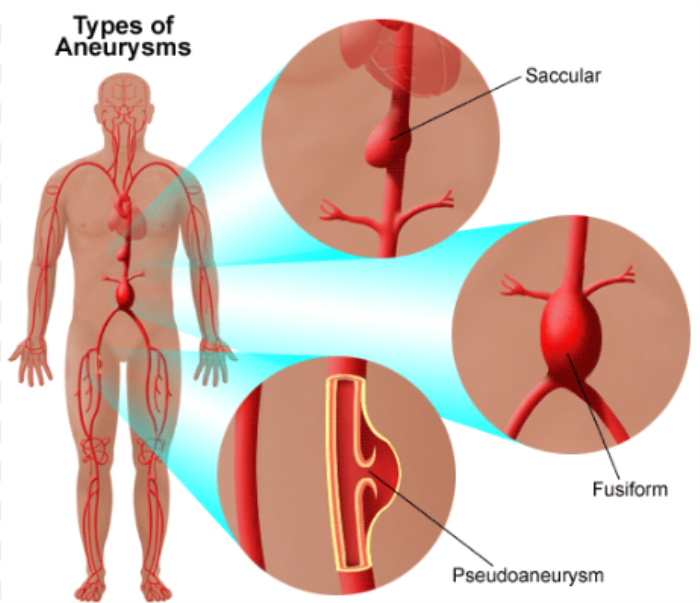What Is an Aneurysm? An Overview
An aneurysm is a balloon-like bulge in a blood vessel due to a weak vessel wall. Aneurysms can form in arteries and can increase the risk of rupture, which leads to severe internal bleeding. While small aneurysms might not cause symptoms, larger ones can press on tissues and nerves, potentially leading to life-threatening complications. Timely diagnosis can help identify aneurysms before they rupture, making treatment more effective.

Common Causes of Aneurysms
Several factors can contribute to the formation of aneurysms, including high blood pressure, atherosclerosis (buildup of plaque in arteries), and genetic conditions like Marfan syndrome. Other causes include trauma or injury to blood vessels and certain infections. Understanding these risk factors is crucial for preventive care and early detection.
How Do Aneurysms Form in the Body?
Aneurysms develop when part of a blood vessel wall weakens, often due to wear and tear from conditions like hypertension or atherosclerosis. Over time, this weakened section expands under the pressure of blood flow, creating a bulge. Depending on the location and severity, this bulge can rupture, causing severe complications.
Types of Aneurysms and Their Differences
There are various types of aneurysms, with the most common being brain aneurysms, abdominal aortic aneurysms, thoracic aortic aneurysms, and peripheral aneurysms. Each type affects different blood vessels and presents unique symptoms and risks. Identifying the type of aneurysm can help determine the most appropriate treatment options.

Brain Aneurysm Symptoms You Shouldn't Ignore
Brain aneurysms may cause symptoms like sudden, severe headaches, nausea, blurred vision, and neck pain. In some cases, brain aneurysms can cause loss of balance or coordination. Recognizing these symptoms early is vital, as a ruptured brain aneurysm can lead to a stroke or even death.
Abdominal Aortic Aneurysm: Signs and Risks
An abdominal aortic aneurysm can cause symptoms such as back pain, a pulsating sensation in the abdomen, and deep, constant pain. Men over the age of 65, especially smokers, are at higher risk. Detecting an abdominal aortic aneurysm early can prevent a rupture, which is often fatal without immediate medical intervention.
Symptoms of Thoracic Aortic Aneurysms
Thoracic aortic aneurysms occur in the chest area and may present with chest pain, coughing, shortness of breath, or difficulty swallowing. These symptoms often mimic other conditions, which can delay diagnosis. Timely detection is critical to prevent rupture and reduce the risk of severe complications.
Warning Signs of a Peripheral Aneurysm
Peripheral aneurysms occur in the arteries of the legs, arms, or neck. Symptoms include pain in the affected limb, numbness, weakness, and sometimes a noticeable bulge. Although less likely to rupture, they can still lead to blood clots and blocked arteries, making early diagnosis important.
Risk Factors for Developing Aneurysms
Risk factors for aneurysms include high blood pressure, smoking, genetics, age, and poor diet. Lifestyle changes, such as reducing salt intake and quitting smoking, can lower these risks. Regular health screenings are also vital for those at high risk, as timely detection can save lives.
How Family History Influences Aneurysm Risk
A family history of aneurysms can increase the likelihood of developing one. Genetic conditions, such as Ehlers-Danlos syndrome, can also increase aneurysm risk. Individuals with a family history should undergo regular screenings for early detection and preventive care.
Age and Lifestyle Factors Contributing to Aneurysms
Age and lifestyle choices like smoking and sedentary behavior are major contributors to aneurysm development. As we age, blood vessel walls naturally weaken, which can increase aneurysm risk. Adopting a healthier lifestyle can help reduce these risks and support vascular health.
Recognizing Sudden Pain as a Symptom of Aneurysms
Sudden, intense pain can be a warning sign of an aneurysm. Whether it’s a severe headache in the case of a brain aneurysm or sharp abdominal pain for an abdominal aortic aneurysm, sudden pain should not be ignored. Prompt medical attention can make a significant difference in outcomes.
How an Aneurysm Rupture Presents Itself
When an aneurysm ruptures, it leads to sudden symptoms like intense pain, loss of consciousness, and sometimes severe bleeding. Ruptured aneurysms are medical emergencies that require immediate attention, as they can lead to shock, organ failure, and death if not treated quickly.
Dizziness and Blurred Vision: Are They Symptoms of Brain Aneurysms?
Dizziness and blurred vision can be subtle symptoms of a brain aneurysm. These symptoms may precede more severe manifestations, making it crucial to seek medical advice if they occur. Timely diagnosis through imaging can help detect underlying issues before they escalate.
Diagnosing Aneurysms: How Are They Identified?
Aneurysms are typically diagnosed using imaging tests such as CT scans, MRI, and ultrasounds. These tests provide crucial information about the size and location of the aneurysm. Regular check-ups and screenings are essential for those at risk to enable early detection and timely intervention.
The Role of Imaging in Aneurysm Detection
Imaging techniques such as CT angiography and MRI play a significant role in identifying aneurysms. These non-invasive methods allow doctors to visualize blood vessels and assess any abnormalities. Regular screenings using these techniques can aid in the early diagnosis and management of aneurysms.

The Importance of Timely Aneurysm Diagnosis
Timely diagnosis of aneurysms is critical to reducing the risk of rupture and serious complications. Early detection enables healthcare providers to monitor and manage the condition effectively, either through regular check-ups or appropriate treatment options. Delays in diagnosis can lead to life-threatening scenarios.
Preventive Screenings for Aneurysms
Preventive screenings are vital for high-risk individuals, such as those with a family history of aneurysms. These screenings often include ultrasounds or CT scans to detect any abnormalities. Regular check-ups can facilitate early diagnosis and provide a proactive approach to managing aneurysm risk.
The Dangers of Ignoring Aneurysm Symptoms
Ignoring aneurysm symptoms can lead to catastrophic outcomes, including sudden rupture. Timely medical evaluation is crucial for any unusual symptoms, as early detection can lead to effective treatment and prevent potentially fatal complications. Staying aware of warning signs is essential for maintaining health.
Emergency Symptoms: When an Aneurysm Has Ruptured
If an aneurysm ruptures, symptoms such as intense pain, loss of consciousness, and massive bleeding may occur. This is a life-threatening emergency that necessitates immediate medical attention. Understanding these emergency symptoms can prompt quick action and significantly improve survival chances.
Treatment Options Available for Aneurysms
Aneurysms can be treated through medications or surgery, depending on their size and location. Medications can help control blood pressure and reduce the risk of rupture, while surgical options include open repair and endovascular stent grafting. Timely treatment is key to managing aneurysms effectively.
Understanding the Causes and Risk Factors of Aneurysms
Find out the main causes and risk factors of aneurysms. Lifestyle factors, genetics, and preexisting conditions can all increase the risk, making early intervention crucial.
Understanding Minimally Invasive Aneurysm Repair
Minimally invasive procedures, such as endovascular stent grafting, allow doctors to repair aneurysms with smaller incisions and reduced recovery time. These techniques are often used for aortic aneurysms and have fewer risks than traditional surgery. Early diagnosis can make patients eligible for these less invasive options.
How to Reduce Your Risk of Developing an Aneurysm
Reducing aneurysm risk involves lifestyle changes such as quitting smoking, maintaining a healthy diet, and exercising regularly. Controlling blood pressure is crucial, as high blood pressure is a significant risk factor. Preventive care and regular screenings help effectively manage aneurysm risk.
Best Aneurysm Repair Surgery in India
The Best Aneurysm Repair Surgery in India is performed by expert neurosurgeons who utilize advanced techniques such as endovascular coiling and surgical clipping to treat aneurysms, offering personalized treatment plans that prioritize patient safety and optimal recovery outcomes.
Best Aneurysm Repair Surgery Hospitals in India
The best aneurysm repair surgery hospitals in india are equipped with cutting-edge technology and provide comprehensive care, from diagnosis through to post-operative care, ensuring patients receive the highest standard of treatment.
Aneurysm Repair Surgery Cost in India
When considering the aneurysm repair surgery cost in india, patients benefit from affordable and transparent pricing at top hospitals, which offer cost-effective options while maintaining the highest quality of care and expertise in aneurysm repair.
Best Aneurysm Repair Surgery Doctors in India
The best aneurysm repair surgery doctors in india are highly experienced in performing these intricate procedures, utilizing a patient-centric approach that ensures personalized care, precise surgical techniques, and dedicated follow-up care to enhance long-term recovery.
Why Preventive Care Is Key for Aneurysm Patients
For those with aneurysms, preventive care includes routine check-ups, imaging tests, and lifestyle modifications. These steps help monitor aneurysm growth and prevent rupture. Timely diagnosis and ongoing care play a significant role in reducing the risks associated with aneurysms.
Living with an Aneurysm: Lifestyle Changes and Precautions
Living with an aneurysm requires certain precautions, such as avoiding strenuous activities and managing stress. Patients should also follow a heart-healthy diet and adhere to any prescribed medications. Regular medical check-ups ensure that aneurysms are monitored, minimizing complication risks.
Aneurysm Prognosis: What to Expect After Treatment
After aneurysm treatment, patients typically undergo follow-up tests to monitor for recurrence or complications. Prognosis depends on the aneurysm’s location, size, and treatment type. Timely treatment improves prognosis, and with proper care, many patients can lead healthy lives post-treatment.
FAQs About Recognizing Aneurysm Symptoms and the Importance of Early Diagnosis
What are the common symptoms of a brain aneurysm?
Common brain aneurysm symptoms include sudden severe headaches, nausea, blurred vision, and neck pain. In some cases, symptoms may include sensitivity to light or loss of balance.
Are all aneurysms life-threatening?
Not all aneurysms are immediately life-threatening. Small, unruptured aneurysms may not cause symptoms and can be monitored. However, a ruptured aneurysm is a medical emergency and can be fatal without prompt treatment.
Can high blood pressure lead to an aneurysm?
Yes, high blood pressure is a significant risk factor for aneurysms. The increased pressure can weaken vessel walls over time, leading to the formation of aneurysms, particularly in the aorta and brain.
What causes an aneurysm to rupture?
Aneurysms can rupture due to increased blood pressure, trauma, or growth in size over time. This results in a tear in the weakened vessel wall, causing internal bleeding and severe complications.
How are aneurysms diagnosed?
Aneurysms are diagnosed through imaging techniques such as CT scans, MRI, and ultrasound. These tests allow doctors to visualize blood vessels and assess any abnormalities.
Can lifestyle changes help prevent aneurysms?
Yes, making lifestyle changes like quitting smoking, maintaining a healthy diet, and controlling blood pressure can significantly reduce the risk of developing aneurysms.
What is the treatment for an aneurysm?
Treatment options for aneurysms depend on their size and location and may include medications to manage blood pressure or surgery to repair the affected vessel.
Are there different types of aneurysms?
Yes, common types of aneurysms include brain aneurysms, abdominal aortic aneurysms, thoracic aortic aneurysms, and peripheral aneurysms. Each type has unique characteristics and risks.
What should I do if I experience symptoms of an aneurysm?
If you experience symptoms of an aneurysm, such as sudden severe headache or chest pain, seek immediate medical attention. Early intervention is crucial for the best outcomes.
How often should I get screened for aneurysms?
Individuals at high risk for aneurysms, such as those with a family history, should consult their healthcare provider about screening frequency. Regular check-ups can facilitate early diagnosis and timely management.